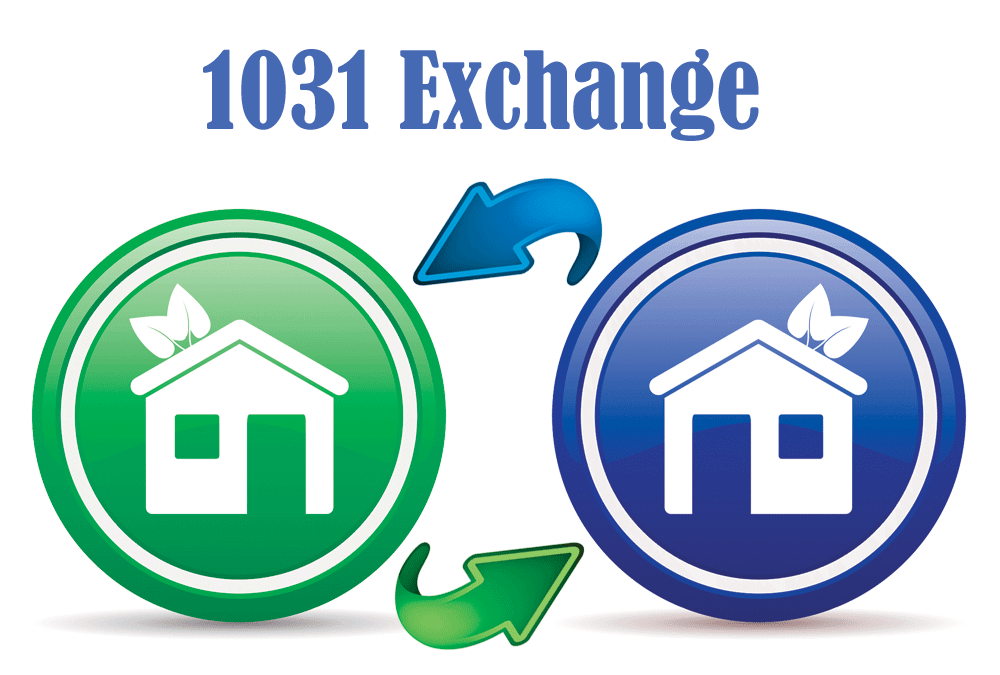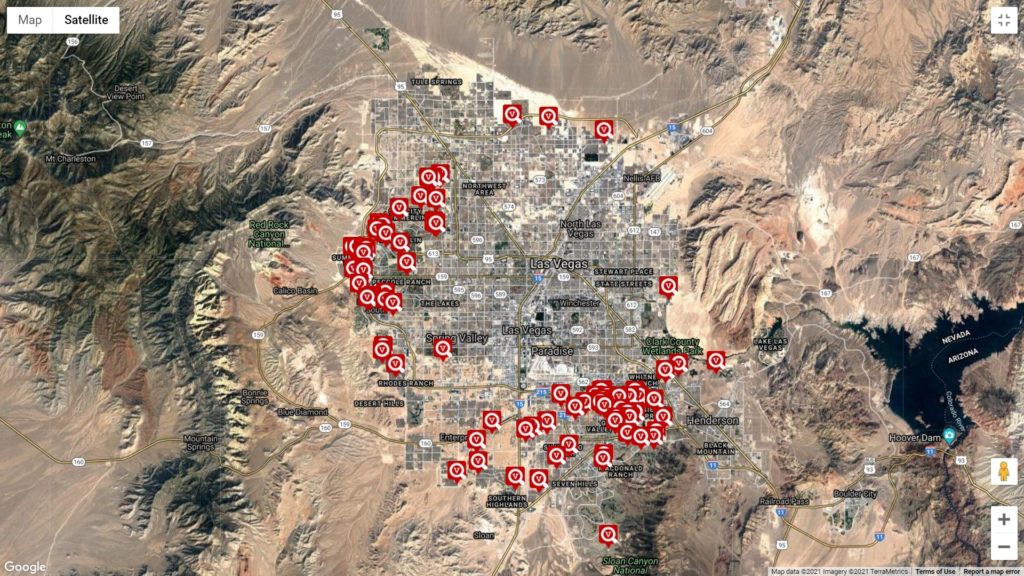
Have you ever wondered how using a 1031 Exchange to purchase investment properties in Las Vegas worked?
Section 1031 of the Internal Revenue Code has been called the single greatest wealth building tool available to real estate investors. If you are unaware how Section 1031 of the IRC can magnify your returns and help you create wealth, review this:
An investor who purchases $100K worth of stock in 2010 and sells the stock today for $200K. The investor yields a whopping 100% return, correct? Well yes, but don’t forget that when tax time comes around, our stock market investor will owe the IRS and State Taxing Authority about $30K. After taxes, the profits from his stock investment plummets from $100K to $70K. Still not a bad return, but after taxes the investor now has only a total of $170,000 to reinvest.
Now let’s contrast this with an investor who makes the same returns in the real estate market. A property purchased for $100K, appreciates to $200K. The investor earns the same 100% return. The major difference however, is the investor can elect a 1031 Exchange and defer the capital gains taxes. Doing so leaves the investor with a total of $200K to reinvest.
The above example is the type of exchange most investors think of when they hear 1031 exchange. Did you know there are many more types of exchanges? First, let’s take a look at this history of exchanges.
History and Benefits of Tax-Deferred Exchanges
Tax-deferred exchanges originated in 1921 as simple two-party barter exchanges. Over the passing decades tax laws changed by requiring exchanges to be multi-party transactions. In 1991, the Internal Revenue Service (“IRS”) formally defined the role of the “Qualified Intermediary.” The Qualified Intermediary is also known as an Accommodator or Facilitator. Investors should seek out a Qualified Intermediary capable of handling the proper execution of necessary documentation as well as informing investors of the various facets of exchanges.
Today §1031 of the Internal Revenue Code governs exchanges. An exchange typically involves a Qualified Intermediary receiving the sale proceeds of the property the investor wishes to sell (“relinquished property”). The investor then instructs the Qualified Intermediary to purchase the new property (“replacement property”) and convey title to the replacement property to the investor. Commercial, agricultural, industrial, residential or vacant land may all be exchanged. By properly effectuating an exchange, the investor can defer the realization of capital gains on the sale of the relinquished property.
This deferral allows funds that would have otherwise gone to pay capital gains tax to be allocated toward a greater investment. An investor is also permitted to defer the 25% tax on the recapture of depreciation taken on an investment property when they elect to effectuate a §1031 exchange.
Types of Exchanges
Delayed Exchange
A delayed exchange is the most common type of exchange. Certain IRS requirements must be met to structure a delayed exchange. Under this arrangement an investor may take advantage of the full exchange period to acquire a replacement property.
Simultaneous Exchange
A simultaneous exchange occurs when the relinquished property and the replacement property are transferred concurrently. Some investors erroneously believe that two transactions closing on the same day satisfies the exchange requirements. Although ERI does not hold funds in a simultaneous exchange, it functions in the critical capacity of creating a reciprocal trade by receiving the relinquished property and acquiring the replacement property for the investor. ERI provides an essential paper trail validation of the flow and structure of the transaction, ensuring the preservation of “safe harbor” treatment for the deferral of capital gains. It is strongly recommended that a Qualified Intermediary be employed to ensure the validity of a simultaneous exchange.
Build-to-Suit or Construction Exchange
An investor may choose to improve a replacement property by building a structure or making improvements to an existing structure on the property. As with any exchange, the exchange must be opened prior to the close of escrow on the relinquished property. Despite the complicated
and time-consuming nature of this type of exchange, it can be properly executed.
Reverse Exchange
Reverse exchanges are the most complex type of exchange. Such an exchange permits the investor to acquire their replacement property before the relinquished property is sold. Under no circumstance may an investor be on title to both properties simultaneously. In September 2000, the IRS indicated that a reverse exchange would be permitted if the transaction fell within the scope of “safe harbor” protection.
The durational requirements of the “safe harbor” require the identification of the relinquished property within the 45-day identification period and the sale of the relinquished property within the 180-day exchange period. The trigger date for these periods is the “parking” of either the relinquished or replacement property with an Exchange Accommodation Titleholder (“EAT”). Reverse exchanges are effectuated in one of two ways depending on which property is to be “parked.” Under either scenario, the parked property must be held by the EAT for federal income tax purposes.
Can an exchange cover repairs?
You can do improvements/repairs to the replacement in the 1031 Exchange; however, the IRS requires that the improvements be completed before the exchangor takes title to the replacement property. There are a couple of (not so great) options.
- The exchangor can have the seller do the improvements and then increase the sales price, but the seller is usually not inclined to do this.
- The exchangor can do the improvements before close escrow, but then the exchangor is improving someone else’s property and could be problematic if the escrow cancels. If you decide to go with this option, the improvements will need to be listed in the Contract.
- The last option is to do a Build-to-Suit (BTS) exchange, where we take title at the time of closing, the exchangor does the improvements, and then when the improvements and completed, we deed the property from us to the exchangor. The fee for the BTS is $9,000, so this option is usually only cost effective if the exchangor is looking to do more than $40,000 in improvements. Additionally, it can be hard to find a lender that will loan to the exchangor when we are going on title at the time of closing. The exchangor is also required to identify the improvements before midnight on their 45th day. If this might be an option, let me know, and I can send you some more information about the BTS exchange.
Finding a Qualified Intermediary
A CPA with 1031 exchange experience, a real estate attorney, or a reputable title company can be good sources for referrals to qualified intermediary services. Another excellent source for finding a knowledgeable qualified intermediary is through the Federation of Exchange Accommodators (FEA). The FEA has a qualified intermediary certification program with a directory of its members that are Certified Exchange Specialists.
We’ve personally worked with Exchange Resources, Inc based in Southern California. Exchange Resources, Inc. is one of the largest independent Qualified Intermediaries in the nation serving individual and institutional investors across the country and abroad. ERI has attorneys on staff who provide personalized attention to complex issues and are available to discuss exchange matters with investors’ tax and legal advisors. ERI also provides information in Spanish. ERI’s routinely helps individual investors with their exchange needs.
Say Hello to Rice Real Estate
If you’re interested in using a 1031 Exchange to purchase investment property in Vegas give Rice Real Estate a call at 702.551.9592 ext 1. We can help you source a residential investment property for purchase and help you manage it long-term.
The material in this article is presented for informational purposes only. Rice Real Estate is a licensed real estate brokerage in the state of Nevada. Rice Real Estate performs the duties of a licensed real estate brokerage and permitted property management company. We do not offer 1031 exchange, legal or tax advice.
Investing in Residential Real Estate is what we do.
Curious how much residential rentals cost in Las Vegas and how much they rent for. Click here to view examples of Las Vegas investment homes and their market rent rates.

Owner FAQs
Our Owner FAQ section was designed to help navigate some of the questions that come up in property management.

Pricing
Our firm has crafted a culture designed around full transparency, reliable communication, and technology.

Areas We Serve
We are selective when it comes to new partnerships in ensure we provide the highest level of attention to each Owner.
